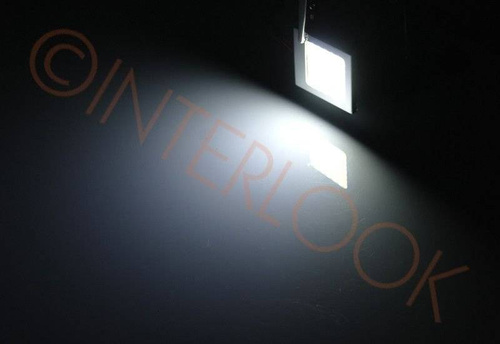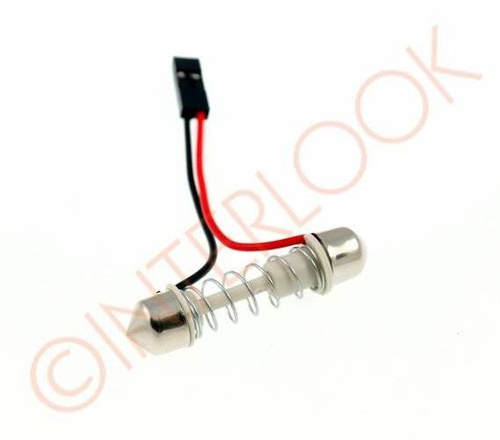48-chip 6x8 LED COB panel + W5W, C5W, T4W adapters
- - LED COB panel 48-chip 6x8 + adapters W5W, C5W, T4W - Light beam power: 720 lm - Light color: Xenon White, ~ 6000k
In a set




LED panel + W5W, C5W and T4W adapters for FREE
The panel, thanks to the attached adapters, can be used interchangeably for a bulb:
- W5W
- W10W
- C5W
- C10W
- T4W
Technical Specifications:
- LED type: WHAT B
- Number of LEDs: 1
- Chip Quantity: 48
- Supply voltage: 12V
- Light beam power: 720 lm
- Light color: Xenon White, ~ 6000k
Dimensions:
- Length: 41 mm
- Width: 36 mm
- Depth: 4 mm
The COB LED panel is ideal for installation in, among others, places such as:
- upper interior lighting
- illumination of the luggage area
- lower door illumination
- yacht lighting
- registration backlight
- The panel has a double-sided tape, which makes it a 'plug & play' device. It is enough to stick the panel in the selected place and connect it to a power source with a voltage of 12V
The kit includes:
- 1x LED panel with 3M double-sided tape
- 1x C5W adapter
- 1x W5W adapter
- 1x T4W adapter
LED Chip-On-Board (COB)
In the SMD technique, it is possible to implement flat modules with a fairly wide angle of light distribution. Chip-on-Board is the most dynamically developing LED technology, enabling the production of extremely flat elements (2 mm) with very high density (up to 70 chips / cm2). This innovative method allows for a small area of one module to obtain a beam of light with high density, especially compared to a diode with leads, where the maximum packing density is 4 LEDs / cm2. The COB technology allows for different beam angles, depending on the carrier material used. The greatest advantage of the COB diode is the generation of a very high power light beam. COB LED light sources are characterized by: highest reliability, high resistance to voltage fluctuations and surge current, uniform color temperature and fully smooth light. The semiconductor applied with COB technology makes the luminous flux non-punctual. Subsequent work on the development of COB gives grounds to believe that it will soon become a key innovation in the development of LED lighting.
Warranty that gives peace of mind
When you buy from us, you get more than just a product – you get 2 years of care. We guarantee quality – you enjoy without worries.
More information about complaints and returns of purchased products.








